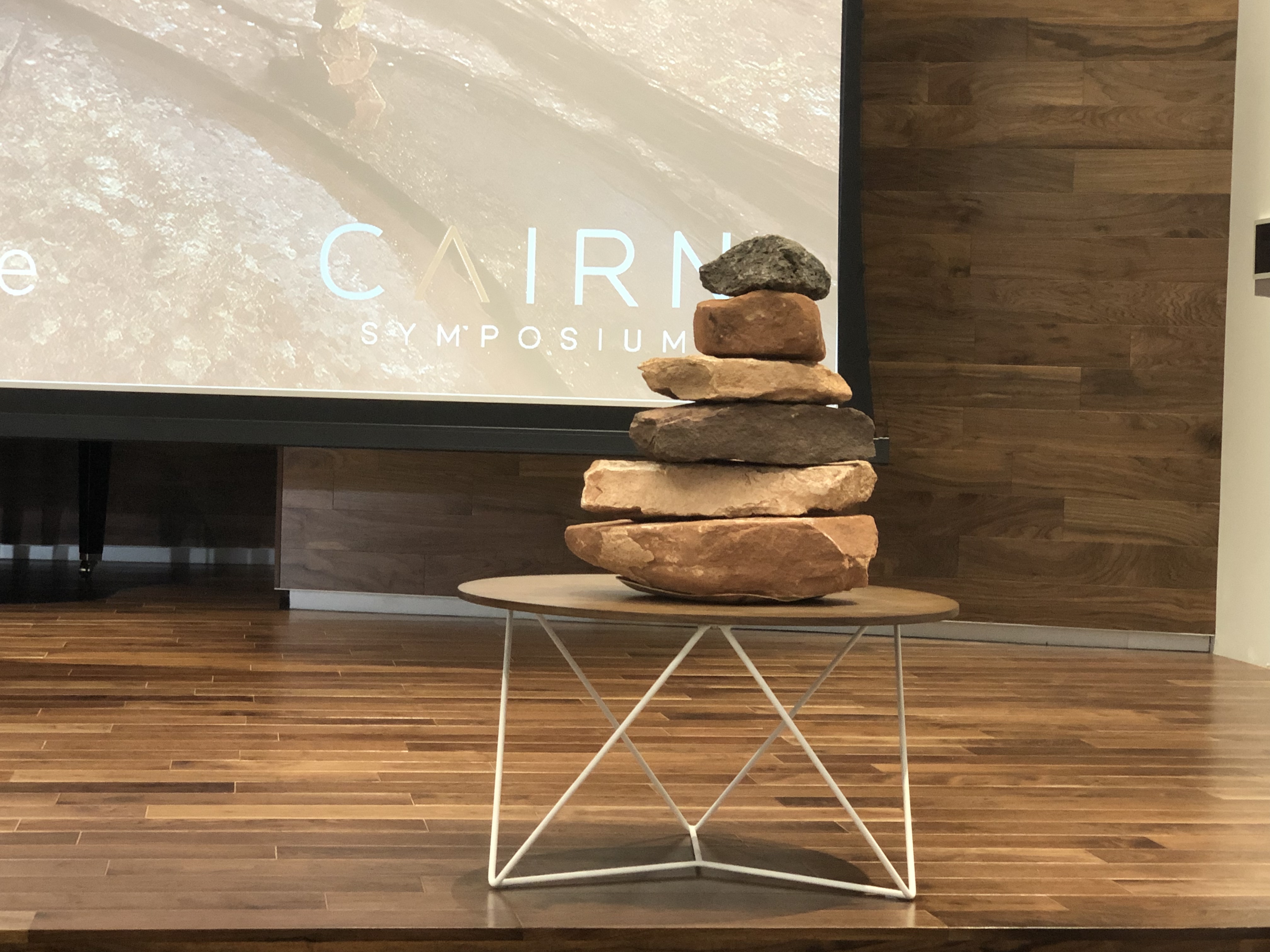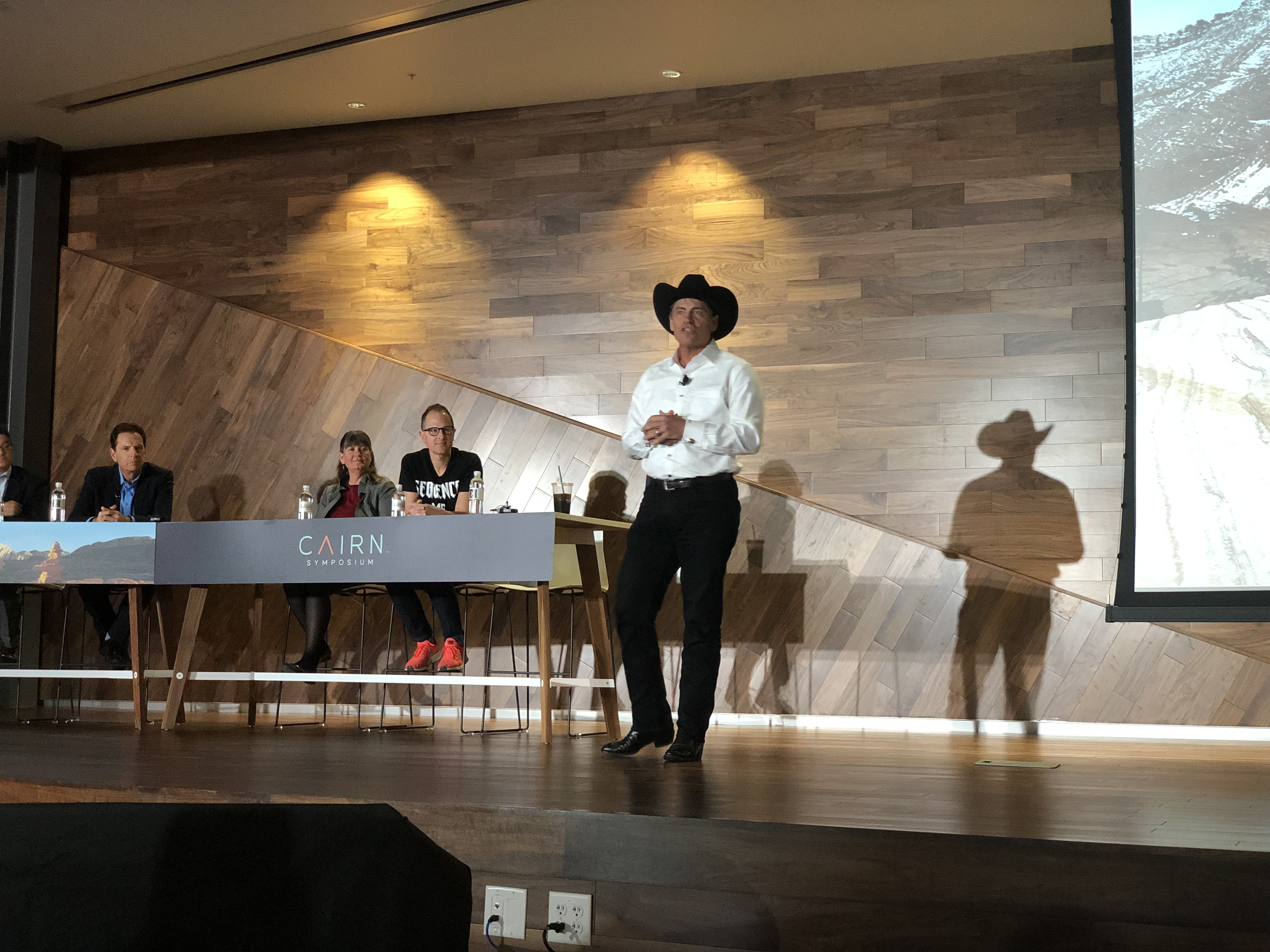
ST. GEORGE — If you’ve noticed Southern Utah’s growth in technology, science, engineering and entrepreneurship, you’re not the only one, as global economic leaders gathered to discuss that growth and what lies ahead.

Cairn Symposium made its debut Friday at Dixie Technical College, as leaders from Amazon, Intel Corporation, NASA and more convened to discuss the convergence movement. The symposium is a first for St. George, but organizers plan on making it an annual event. The name of the symposium comes from what many Southern Utah residents have come across while hiking, mountain biking or other outdoor activities.
“A cairn is a stack of rocks that marks a path or a trail,” said Bryson Despain, Cairn Symposium committee member. “A cairn marks the path without paving it; showing us where we’ve been without predetermining our destination.”
As part of the invitation-only symposium, a panel was conducted with leaders in the science, technology, engineering and entrepreneurship industries: Dr. Hanlee Ji, executive director of the Genome Technology Center at Stanford University; Mike Clayville, vice president of Amazon Web Services; Dr. Candice Hansen-Koharcheck, a planetary scientist for NASA; Bryce Olson, health care strategist for Intel Corporation; Fraser Bullock, managing director of Sorenson Capital; and Dr. Lincoln Nadauld, executive director of Intermountain Precision Genomics.
“It’s pretty remarkable to have people of this caliber and talent and accomplishment come together,” said Nadauld, who facilitated the panel’s discussion.
The point of the symposium, Nadauld said, is convergence – where “thought leaders” from different industries come together.
Ji described the convergence movement as where technology, science, engineering and entrepreneurship companies converge to create something new, adding that St. George is a great place for convergence “because you have the ability to think without worrying about traffic jams and whatnot,” Ji said, referring to Silicon Valley. “I think it’s the perfect environment to stimulate that kind of thinking.”
Growth of technology

Each panelist shared perspectives on their respective fields and how they see their field converging with others. Clayville, who works frequently with technology, discussed the current major shifts.
“It really is a unique time in history because of the fact that there is a lot of new technologies coming into play that simply weren’t available to researchers in the past,” he said, adding that he thinks there are four major aspects in technology that are going to fundamentally change the way people think about the convergence movement:
- Big data.
- Artificial intelligence and machine learning, or MI.
- Internet of Things, or IoT, which is a system consisting of sensors that collect and exchange data.
- Robotics.
Advanced technology, such as big data, can help solve problems, Clayville said.
“Technology evolution is speeding up at a pace that’s unprecedented in history.”
Health care advancement
Besides being a health care strategist for Intel, Olson is also an advanced cancer patient. In 2014, he was diagnosed with aggressive metastatic prostate cancer. From a patient’s perspective, Olson said feeling empowered and engaged in your own health care doesn’t look like going through the standard of care.
“Not really knowing what to do, I just followed my doctors orders,” he said. “I went through that same one-size-fits-all, everybody gets the standard of care, spin the wheel trial-and-error treatments.”
When surgery, chemo and radiology didn’t work, Olson said he lost hope and came to terms with his own mortality when his cancer started coming back in 2015. Everything changed for him when he learned about genomics and precision medicine. He learned about places like Intermountain Precision Genomics, which looks at the genetic makeup of a person to test for hereditary cancer.
His doctor finally agreed to genome sequence his tumor, which led Olson to find a trial for a phase I drug that was a perfect match for him.

After seeing some success with his cancer treatment, Olson felt morally obligated to get the word out to advanced cancer patients.
“From a convergence perspective, I started to use other ways to get the word out,” he said, adding that he launched a music project to bring awareness to different ways to fight cancer.
He also created a campaign called “sequence me” in hopes that cancer patients will demand sequencing from their health care providers.
Besides sharing his story about living with cancer, he said there are three opportunities for health care innovators to stand out in St. George: Using trends in technology, such as artificial technology and big data, putting patients at the center of health care and focusing on fee for value, instead of fee for service.
Olson said Intermountain Healthcare is already heading in that direction, adding that it gives Intermountain momentum to keep innovating.
“I need you to innovate. I will not make it if you don’t innovate.”
Supporting Southern Utah’s growth
In order to strengthen Southern Utah’s growth in technology, engineering, science and entrepreneurship, panelists said people need to support the companies that are just starting out.
Panelists applauded projects in St. George and said they are going to need support as far as capital goes, such as Dixie State University’s Innovation Plaza and Tech Ridge. They also said St. George needs to continue fostering an ecosystem of entrepreneurs, such as students starting their own businesses right out of college.
To learn more about Cairn and next year’s symposium, you can visit its website.
Email: [email protected]
Twitter: @STGnews | @markeekaenews
Copyright St. George News, SaintGeorgeUtah.com LLC, 2019, all rights reserved.